There are so many flies out there, that everything one invents has invariably been done before.
There was this one inspired by a friend of Fran Better’s Dad….one Eddie Lawrence of the Green Drake Club, who gave it to him, and which he passed on to Fran who refined it and named it as the “Haystack”. (Info from HERE) . Then it was sort of copied in Al Caucci’s Compara Dun, and Bob Wyatt used a similar concept when he did his DHE (Deer Hair Emerger).
I like and use the DHE. (also called the Berg Emerger as created by Peter Brigg), and since Marc Petitjean’s visits to South Africa in recent years, I have been encouraged to play around with CDC a lot more than I used to. In addition to that, I listened intently the other day when Hans Van Klinken described to us how his Klinkhammer actually floats using the wing, not the hackle, which aids in its low float. A low float is what a DHE does, and it does it with deer hair. CDC would help it to stay there and not sink, right? And that bum that hangs in the water….why not weigh it down with a disused shuck, using the stillborn/stuck-shuck concept.
Petitjean numbers his flies. Everyone else names them. (normally after themselves….even I have done that) There just isn’t enough space for new names. So here is a nameless thing :
Features:
- an oversize wing in both CDC and deer hair, so that it will float and so that you can see it.
- A scraggly, sparkly, semi submerged thorax with a bit more CDC in there to help it stay up.
- A butt that sinks, and represents a midge that just couldn’t wriggle out of its skin.
Here is the tie:
You will need this stuff:
Start with that hook, which needs to be this sort of shape, and note that it has to be barbless…you will see why later:
Now choose some Klipspringer or similar white deer hair, stack it in a 9mm cartridge (see how that stacker alongside is just too big?) , and tie it in facing forward over the eye of the hook.
Now get yourself some white CDC, and tie it in behind the deer hair wing. I do it like this:
Note that I prefer to use some common foam in place of Marc Petitjeans little table thing. Sorry Marc…I just like the foam better, but hey, the clear clip is the best!
Then I push it down with a needle until I can grab the bunch in my fingers and release it from the clip. I am afraid I don’t own that fancy tool that does this, but a needle works:
OK…now tie it in:
Now strip a peacock herl, and then tie it in here:
Note that I wound the silk right down to the very end of that exposed hook, but only tied in the peacock herl about a third of the way up. Now wind the herl forward and tie off, so that you have the top two thirds or so of the body wound with a herl, and the lower third as bare silk, like this:
Now, whip finish and take the fly out of the J Vice. Now get yourself some hollow tube ….I use larva lace……something just off totally transparent:
And with a blade, split about half of the piece you have cut, like this:
Remember I said the hook has to be barbless? Here’s why:
Slide the tubing over the point, in-tact end first (split piece trailing):
Before pressing the tube all the way, stop at about the point indicated above, and wet the exposed silk with superglue or UV glue. If you are going to be fishing this pattern with Hans Van Klinken, and assuming you are honest, I recommend you use the UV glue. This is because when you catch a fish, Hans disallows it in the scoring when caught on the superglue version , based on the fact that to glue flies with superglue, just isn’t cricket (or fly tying).
Anyway, once you have wet that slender portion of silk (no more…use tiny quantities….), slide the tube up to where the wraps of stripped herl start:
Now place the hook back in the vice and put a thin layer of UV glue on the stripped herl body to strengthen it and give it translucence:
Then start the silk again between the wing and the body, and form a dubbing loop ready for spinning, and once done, get out your CDC tools and put some low quality, sparse, scraggly CDC into the slot. In this case I am using black. Then put the clip on it, but in the case of a small fly, like this one (#16), pull the clip back so as to just grab the ends of the fibres , as a means of getting slighty shorter fibres trapped in the clip:
Now, get your dubbing. I never use dubbing straight from a packet. Its against my laws. I have to mix. Here I mix various spikey black dubbings, with some very sparkly ice-dub or similar.
Now, pull a very sparse skein of dubbing, like you would do if you were going to place some dubbing in a dubbing loop, but even more sparse than if you were going to do that, and place it atop the protruding ends of CDC in the clip like this:
Now get it into your dubbing loop , and spin:
Now wind that brush behind, and later, in front of the wing, and then tie off at the eye:
Then form a head, and whip finish etc. Now swing your J Vice upside down, and carefully trim everything below the shank, like this:
Notice how I have taken particular care to cut away any dubbing and CDC that pointed rear of the thorax.
This is so that the fly will sit right down in the water, with its front high and its backside low.
Here is the finished product:
If you like it, you are welcome to name it. One day maybe I will attend a fly tying workshop, and you can tell me its new name and show me how to tie it.
PS. Yes, it does catch fish.
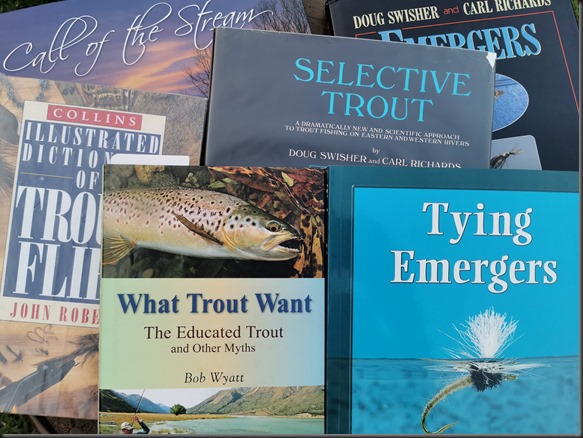
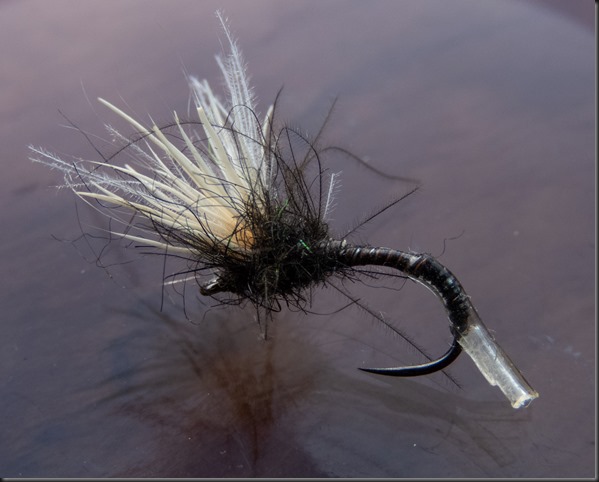
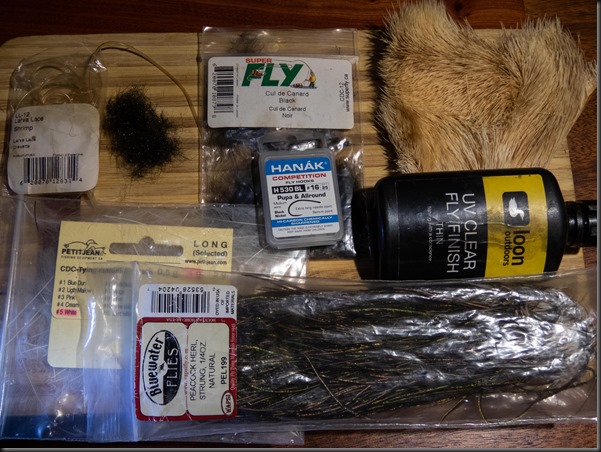
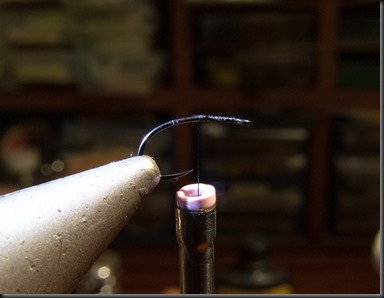
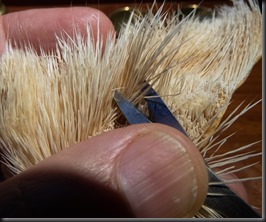
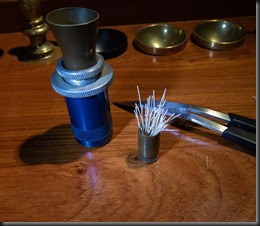
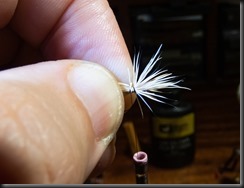
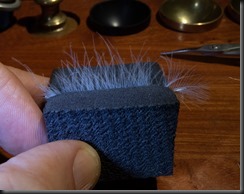
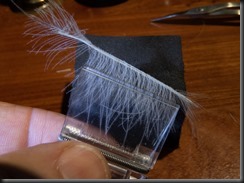
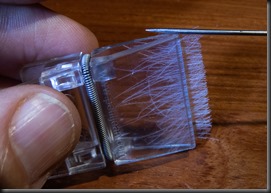
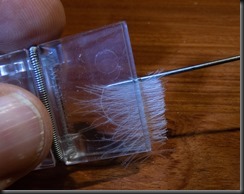
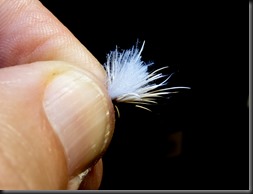
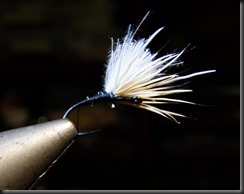
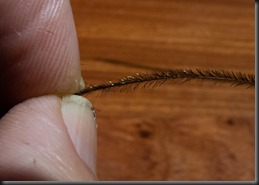
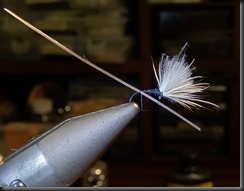
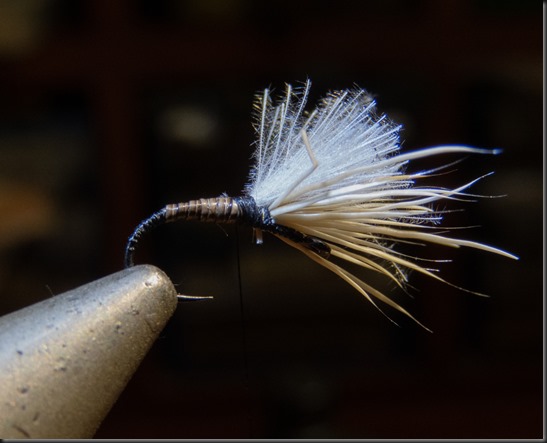
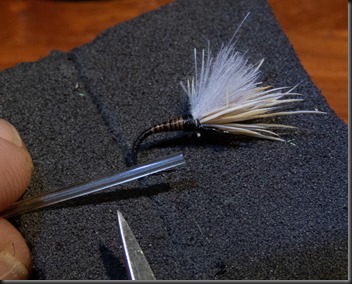
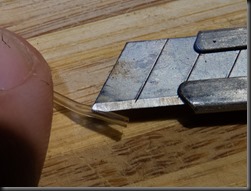
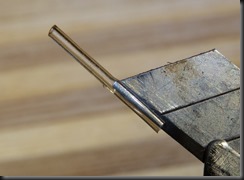
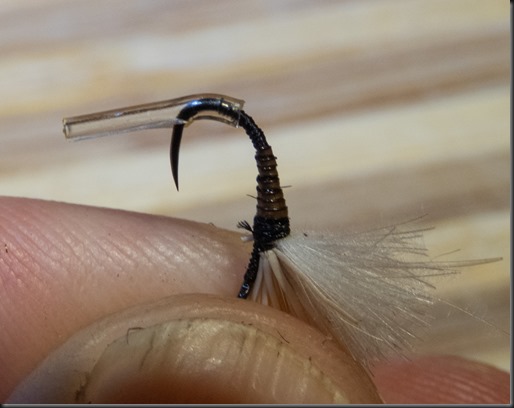
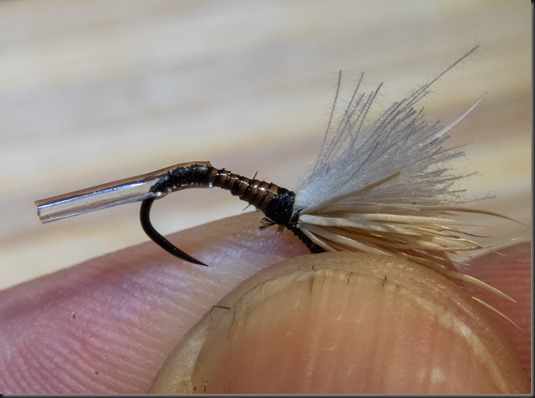
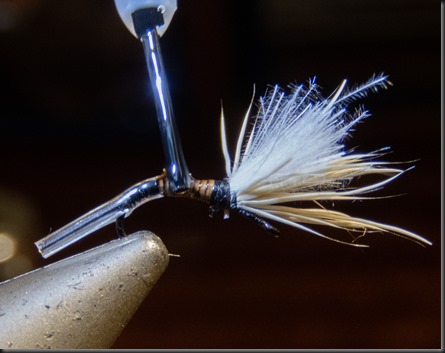
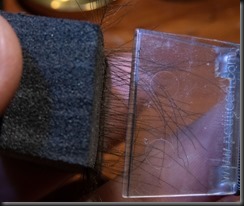
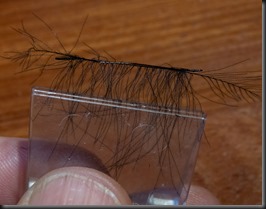
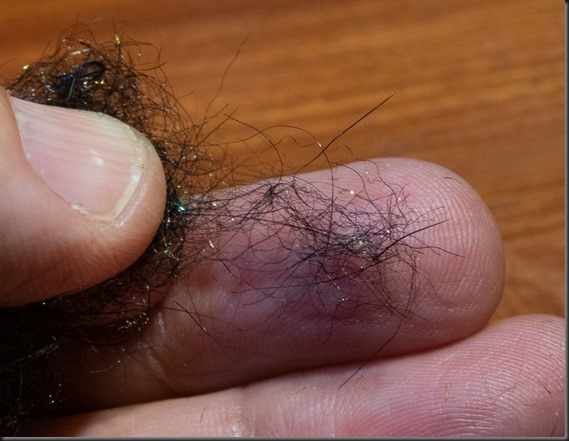
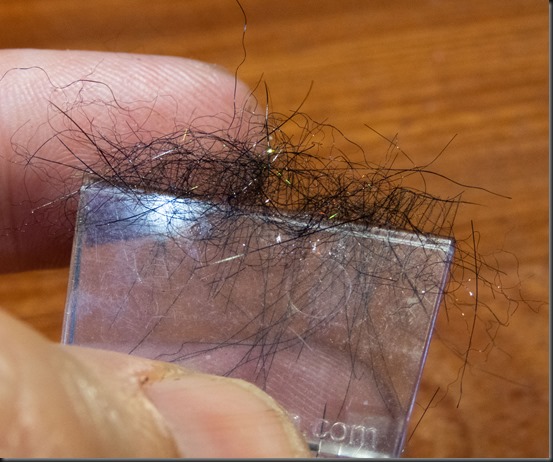


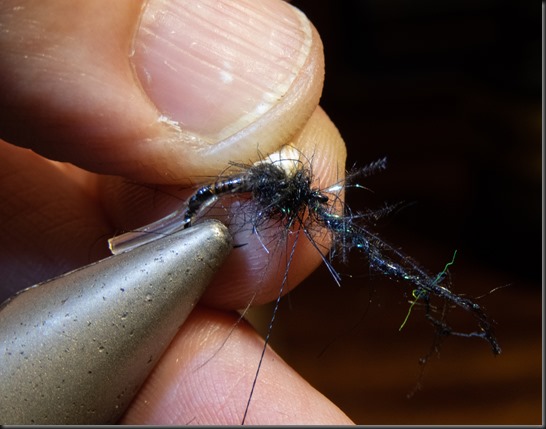
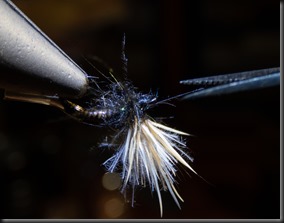
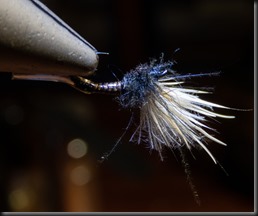
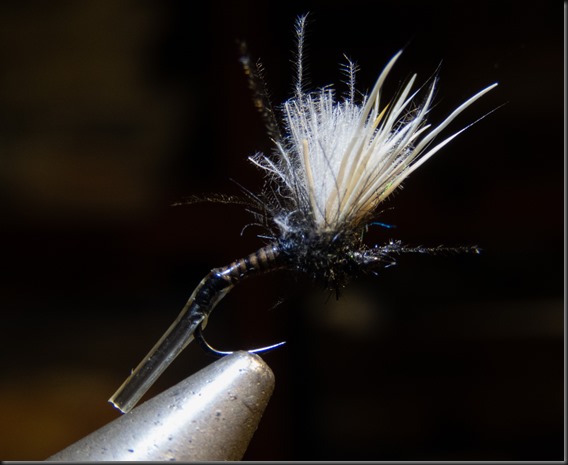
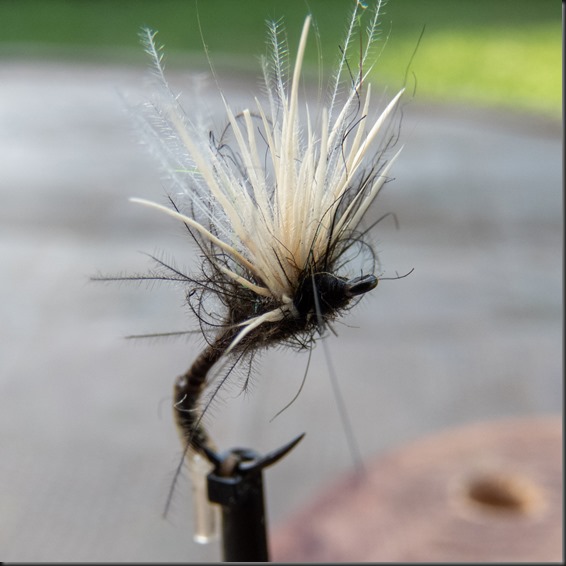
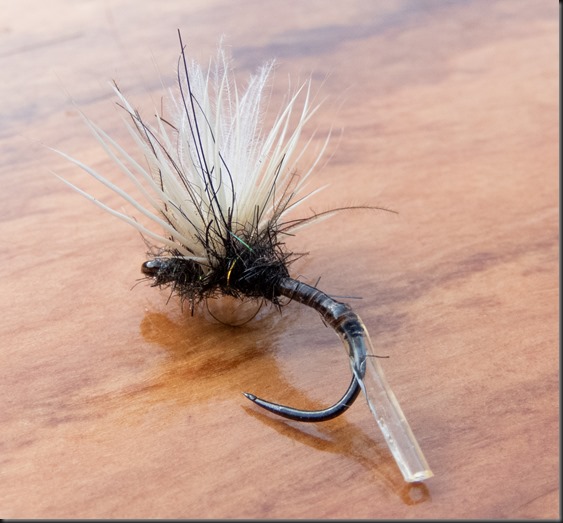
One Response
Nice.
Try either raffia or just thin plastic bag (think the bag they put your tomatoes in at the shop) for the shuck. More movement & less weight.